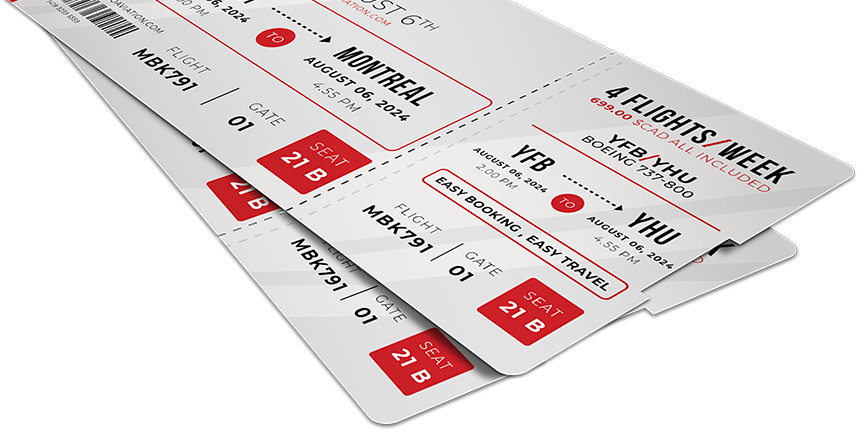CHILD RESTRAINT DEVICES
Child restraint devices may be carried onboard (in addition to the infant carry-on allowance) if used to secure an infant or child for all stages of flight. In order for the CRD to be brought onboard, a seat must have been purchased for its explicit use. If a seat has not been purchased then the CRD must be checked.
Infant carrier devices of the sling/wrap type (similar to a Snugli© or Baby Bjorn©) are permitted as carry-on, however they are not approved for use as a child restraint system in an aircraft, in-flight at any time.
POLICY – INFANTS AND CHILDREN
Chrono Jet does not provide seat restraint devices to small children or infants. Canadian Aviation Regulations do not allow a customer (age 16 years and older), at any time, to be in charge of more than one infant onboard an aircraft. This applies whether the infant is lap-held (occupies the same seat as the adult) or sitting in a child restraint device in an adjacent seat.
Chrono Jet is bound by Transport Canada regulations with regards to acceptable child restraint devices.
Only approved child safety seats or restraint devices are accepted for in-flight use. The use of a child safety seat or restraint device is:
- Mandatory for an infant under 2 occupying a seat
- Optional for a small child, dependent on the manufacturer’s guidelines for the device’s maximum weight.
ACCEPTABLE RESTRAINT DEVICES
Child Restraint Devices (CRD) are accepted for air travel as long as they bear a sticker of approval from the Canadian (or Federal) Motor Vehicle Safety Standards. This sticker will read that the seat is approved under CMVSS 213 or 213.1 or FMVSS 213.
In the case of a parent/guardian travelling with a child in a restraint device, the following requirements must also be present and will be verified.
LABELING REQUIREMENTS
Transport Canada has increased the range of Child Restraint Devices (CRD) accepted on board to expand beyond those manufactured to Canadian and American standard. This now includes CRD manufactured to Australia/New Zealand and United Nations (UN) – Economic Commission for Europe (ECE) foreign standards provided that the criteria described below is met.
AUSTRALIA/NEW ZEALAND (AS/NZS)
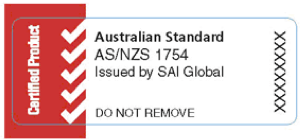
And
2. Label displayed below indicating that the device is acceptable for use on board aircraft:

UNITED NATIONS (UN) – ECONOMIC COMMISSION FOR EUROPE (ECE)
1. A label displaying UN standard ECE R44-03 (revision 03) or a later revision, as shown in examples below:
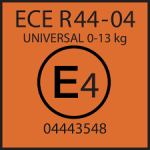
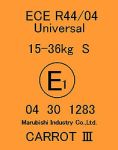

AND
2. A displaying qualification for use in aircraft as shown in examples below:
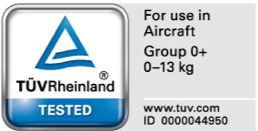
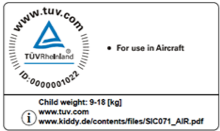
Child Restraint Devices certified to UN-ECE standards that do not contain both labels are not acceptable for use on board Canadian aircraft.
